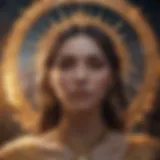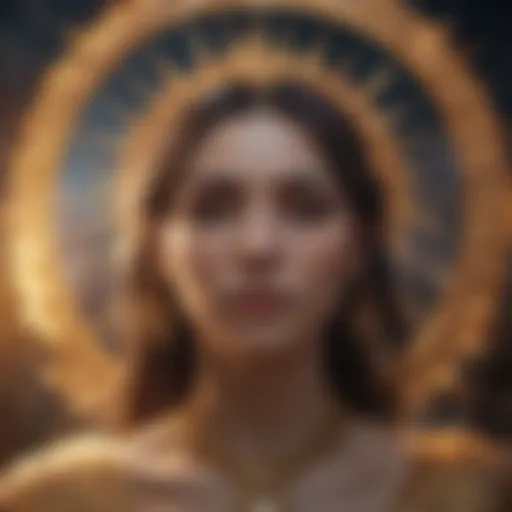Exploring Unique Tarot Cards: Art and Interpretation
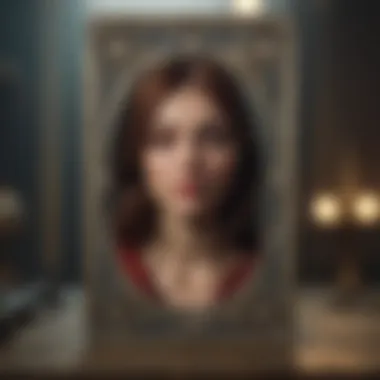

Intro
The world of tarot cards is rich with history and varied practices. Unique tarot cards often stand apart from traditional decks, reflecting not just personal beliefs but cultural narratives. Every card acts as a canvas for various artistic expressions, which allows for deep interpretation and connection. This article will delve into distinct aspects of tarot cards, examining their significance in personal development and cultural contexts. Through a careful exploration, we will uncover how tarot functions as a tool for introspection and artistic expression.
We will approach this exploration through various facets, from the diverse styles of artwork to the interpretations rooted in personal experiences. By examining these elements, we aim to highlight the relevance of unique tarot cards in both contemporary practice and ongoing dialogues in esoteric circles.
Understanding the foundation of unique tarot cards begins with examining their characteristics beyond mere symbols. Each card can tell a story, revealing insights into the user’s life journey and aspirations. As we move through the article, we will observe how contemporaneous designs increasingly reflect the complexities of modern life and the multifaceted nature of the human experience.
Prelude to Tarot Cards
Tarot cards hold a significant place in art, spirituality, and personal development. Their layers of meaning contribute to how individuals and cultures navigate life’s uncertainties. In this article, we will dissect the multifaceted concept of tarot cards, which encompasses rich history, artistic variations, and the current evolution of practices surrounding them. Understanding tarot involves looking inward as much as looking outward, thus serving both as a self-reflective tool and a canvas for creativity.
Historical Context
Origins of Tarot
The origins of tarot can be traced back to 15th century Europe, where they were first used as playing cards. These early decks, such as the Visconti-Sforza, illuminate the cultural and social landscapes of their time. Notably, their transition from mere entertainment to divinatory purposes marked a pivotal point in tarot's history. Tarots' shift towards mysticism and spirituality happened gradually, with each card beginning to represent not only images but also abstract concepts and ideas about human experience. This historic background enhances our understanding of tarot's depth and provides vital context in exploring unique decks today.
Evolution Through Ages
As centuries progressed, tarot experienced various transformations. From its beginnings in Italy to its adoption throughout France and beyond, each iteration of tarot introduced different ideas and themes. During the Enlightenment, tarot cards were linked to the occult, which further propelled their mystique. The artistic interpretations changed with different cultures, enriching the deck's symbolism. Importantly, this evolution is vital for understanding contemporary creative expressions seen in unique tarot decks today. Each design and artistic choice embodies influences from its historic roots.
Tarot and Mysticism
The connection between tarot and mysticism cannot be overstated. Many practitioners view tarot as a tool for divination and insight, bridging the gap between the conscious and the unconscious mind. The practice of using tarot as a divinatory tool gained considerable traction in the 18th century. Occultists and mystics popularized methods of reading the cards, such as the significant spread patterns that are still used. It introduces an essential dimension of spiritual exploration, which is invaluable for readers aiming to comprehend the broader implications of unique tarot cards.
Basic Structure of Tarot Decks
Major Arcana
The Major Arcana comprises 22 cards that symbolize significant life events and experiences. Each card in this section captures profound archetypal themes — such as The Fool, The Magician, and The World. The key characteristic of Major Arcana lies in its representation of powerful life lessons. These cards are instrumental in tarot readings, allowing individuals to delve deeply into their journeys. Moreover, their spiritual resonance makes them a foundational aspect of any tarot deck, providing dramatic, narrative arcs to explore.
Minor Arcana
In contrast, the Minor Arcana consists of 56 cards divided into four suits: cups, swords, pentacles, and wands. These cards reflect day-to-day events and experiences, providing insight into the mundane aspects of life. Each suit vitalizes different parts of life's journey, making them equally significant. The Minor Arcana is essential for readings, as they help in grounding the often ethereal insights provided by the Major Arcana. They capture the broader spectrum of human experience, making the overall reading balanced and complete.
Suits and Numbers
Each suit of the Minor Arcana not only speaks to different facets of life but also integrates numerical significance. The numerical values range from one to ten, alongside four court cards: page, knight, queen, and king. This structure allows an additional layer of interpretation, enhancing the reader's understanding of both personal and relational dynamics. The suits and numbers provide a framework for exploring themes of action, emotion, and the material world. Together, they contribute to a cohesive understanding of tarot, enriching the overall approach to unique tarot decks.
The Aesthetics of Tarot Cards
The aesthetics of tarot cards play a pivotal role in both their appeal and their functionality. Tarot is not merely a tool for divination; it is also an artistic expression that reflects complex themes and emotions. The design of each card serves as a bridge between the reader and the querent, offering a visual language that enhances the interpretation of meanings. Therefore, exploring the aesthetics of tarot cards invites a deeper understanding of how art influences personal connection and experience within the realm of tarot.
Artistic Styles
Traditional Artistic Influences
Traditional artistic influences in tarot cards are often rooted in historical art movements and visual symbolism. Decks like the Marseille Tarot showcase a distinct style that emphasizes clarity and structure. The key characteristic of traditional designs lies in their adherence to established iconography, ensuring consistency in interpretation. This makes such decks a beneficial choice for those who seek authenticity and a connection to tarot’s historical context.
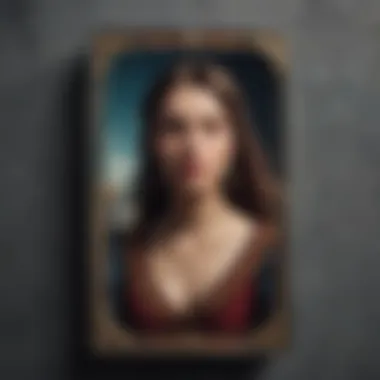

Traditional decks often feature clear, recognizable figures and symbols, which can be advantageous for beginners. However, their limited creativity might not appeal to all, as some may find these styles too rigid or lacking in personal expression.
Contemporary Art Movements
Contemporary art movements integrate modern aesthetics into tarot card designs. Decks inspired by those styles often highlight vibrant colors and abstract forms. A key characteristic of contemporary designs is their ability to challenge conventional ideas about tarot. By transcending traditional boundaries, these decks appeal to a modern audience and invite innovative interpretations.
The unique feature of contemporary tarot cards lies in their diverse styles, catering to a wide range of tastes and preferences. However, this can sometimes lead to a disconnect for those who prefer historical accuracy or traditional symbolism, which may cause confusion during readings.
Mixed Media Approaches
Mixed media approaches introduce varied materials and techniques into tarot design. For instance, some decks combine photography, painting, and digital elements to create visually striking representations. The key characteristic of mixed media is the fusion of different artistic methods, allowing for greater expression and creativity. This choice can be highly beneficial for artists looking to convey complex themes or personal narratives.
The unique feature of mixed media decks is their potential for depth and multilayered meaning. Nonetheless, this complexity can pose challenges for those unacquainted with interpreting non-traditional imagery, potentially complicating the reading process.
Symbolism in Designs
Universal Symbolism
Universal symbolism refers to images and motifs that resonate across cultures, providing a common language within tarot. It is a core aspect of tarot cards that helps establish connections beyond individual interpretations. The key characteristic of universal symbolism is its ability to evoke shared human experiences, making it a popular choice for diverse audiences.
Unique features of universal symbols, like the sun or moon, often carry inherent meanings that facilitate intuitive understanding. However, misinterpretation can occur if users are not familiar with these symbols’ universal applications.
Cultural Symbols
Cultural symbols are specific images rooted in particular heritages and traditions, enriching the narrative found in tarot decks. The key characteristic of cultural symbols lies in their representation of specific histories, beliefs, and values. This makes cultural aspects beneficial in expanding the tarot narrative to include diverse perspectives.
The unique feature of cultural symbolism enhances a deck's depth but can also present disadvantages, as not all users may have the cultural knowledge necessary to fully grasp these meanings.
Personal Interpretation
Personal interpretation emphasizes the subjective experience of the tarot reader, allowing for individualized meanings to emerge during readings. The key characteristic of this approach is its fluidity, making it a beneficial aspect for many practitioners who value personal connection.
A unique aspect of personal interpretation is its focus on subjective insight, which can lead to more profound and meaningful readings. However, it may also introduce challenges, as differing interpretations can cause inconsistency in readings across various practitioners.
Innovative Tarot Decks
Innovative tarot decks have grown in importance within the broader exploration of tarot practices. They showcase cultural shifts, artistic individuality, and personal expression. By breaking from tradition, these decks engage a diverse audience, expanding the boundaries of tarot reading. The benefits of innovative designs include increased accessibility and relatability, while considerations often revolve around the clarity of symbols and meanings.
Non-Traditional Themes
Pop Culture Inspirations
Pop culture inspirations within tarot decks are a notable aspect. They reflect current societal themes and provide relatable content for modern readers. The main characteristic of these decks is their integration of elements from movies, music, and social media. This makes them appealing to younger generations, who may feel a deeper connection with familiar references.
A unique feature about pop culture-inspired decks is their ability to bridge gaps between traditional divination and contemporary life. However, there are some disadvantages. The symbolism may not always align with classic tarot meanings, potentially confusing practitioners. Nevertheless, their popularity helps introduce a wider audience to card reading.
Fantasy Elements
Fantasy elements in tarot decks allow for imaginative and whimsical themes. They often draw on folklore, mythology, and fantastical creatures. This characteristic engages readers by providing an escape from reality. It enables exploration of the subconscious through rich narrative structures.
The unique feature of fantasy-themed decks lies in their illustrative creativity. However, these decks can sometimes overwhelm users. The details may complicate interpretation and hinder the core purpose of tarot, which is clarity and guidance. Yet, their vibrant imagery can offer inspiration and a refreshing perspective on traditional readings.
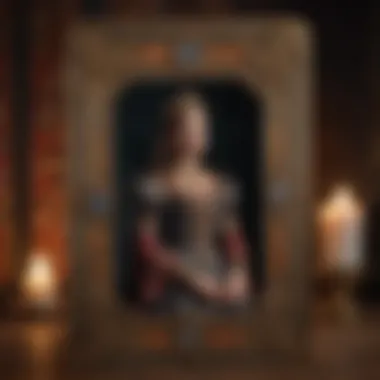

Nature and Environment
Decks that focus on nature and environment tap into themes of sustainability and the interconnectedness of life. They celebrate elements like flora and fauna, promoting awareness of ecological issues. This aligns with growing global consciousness about environmental matters.
The main characteristic of these decks is their holistic view. They appeal to individuals who value nature and seek deeper meanings tied to the earth. A unique feature of nature-themed decks is their incorporation of ecological symbolism that resonates with many readers. However, some might find these decks too niche, limiting their appeal. Still, they serve as a reminder of the significance of nature in tarot practice.
Artist-Centric Decks
Artist-centric decks highlight the contributions of individual artists to the tarot world. They emphasize unique artistic voices and visions, enriching the tarot landscape with personal interpretation and creativity. A key characteristic of these decks is their divergence from standard designs, offering new perspectives for readers. They are widely appreciated for their aesthetic value, even as they maintain functional integrity in card reading.
Individual Artist Contributions
Individual artist contributions bring uniqueness and fresh insights to tarot. Artists often embed their personal experiences and styles into the card designs, influencing the energy they convey. This individuality can significantly enhance the reading experience, making it personal and tailored to the reader's journey.
The unique feature of these decks is the artist's signature style, which can create a deeper connection between the reader and the cards. However, the downside may include inconsistency in the symbolism used, requiring readers to adapt quickly to varying interpretations. Still, the benefits often outweigh the challenges, as they offer a rich tapestry of meanings and artistic expression.
Collaborative Deck Projects
Collaborative deck projects involve multiple artists contributing to a single deck. This approach fosters creativity and diversity, combining various artistic techniques and interpretations. The main characteristic is the plethora of styles and views within one deck, which allows for multifaceted readings.
A key benefit of collaborative decks is their capacity to represent a wider range of cultures and backgrounds. This enriches the tarot experience by providing unique insights. However, such projects can lead to conflicting artistic visions, which may create inconsistencies. Despite this, they remain an enriching contribution to the tarot community due to their cultural inclusivity.
Custom Deck Offerings
Custom deck offerings stand as testament to the uniqueness of tarot. They allow users to create personalized cards that reflect their experiences and beliefs. The notable characteristic of custom decks is their tailored symbolism and art, which speaks directly to the individual’s journey.
The unique feature of these decks is their personal touch, often making them deeply meaningful for the user. However, the risk involves potential challenges in interpreting the added elements, as personal symbolism may differ significantly from traditional meanings. Regardless, custom deck offerings embody the spirit of personal growth and serve as an expression of journey in the tarot realm.
The Role of Tarot in Personal Development
The exploration of tarot in personal development reveals its multifaceted role as a catalyst for self-reflection and growth. The use of tarot cards is not limited to divination. Instead, they serve as tools that facilitate personal exploration. Engaging with tarot can provide insights into one’s emotional landscape and inspire change. The focus on personal development through tarot underscores its relevance in contemporary practices.
Reflective Practices
Self-Discovery and Introspection
Self-discovery through tarot provides profound opportunities for in-depth introspection. Individuals often find that the imagery and symbols depicted on each card resonate with their experiences, emotions, and thoughts. Tarot cards encourage seekers to confront their inner conflicts and desires. The key characteristic of this process is its ability to evoke deep personal truths. This makes it a beneficial choice for those seeking clarity in complex situations. Unlike conventional self-help methods, tarot combines intuition with symbolism, offering a unique framework for understanding oneself. One unique feature of this method is the spontaneity of card selection, which can lead to unexpected revelations. However, it is worth noting that over-reliance on tarot for self-discovery can lead to superficial insights if not combined with active self-reflection.
Journaling Prompts
Journaling prompts inspired by tarot can serve as powerful tools for reflection. They allow individuals to articulate their thoughts and feelings in relation to the cards they draw. This method connects deeply with one's life narrative, making self-assessment more structured and intentional. The key characteristic of journaling prompts is their direct engagement with the tarot’s rich symbolism, which encourages individuals to explore their circumstances more fully. This makes journaling a popular option for those who appreciate the written word. A unique feature is the potential for ongoing entries, allowing users to follow their development over time. Considering advantages, journaling assists in processing emotions effectively, yet it can also become overwhelming for those who struggle with consistency.
Guided Readings
Guided readings represent another approach for personal development using tarot. Conducted by an experienced practitioner, these readings can provide clarity and direction. The key characteristic of guided readings is the personalized interpretation based on the seeker’s questions and cards drawn. This method is beneficial for those unfamiliar with tarot or who seek a more structured experience. A notable unique feature of guided readings is the opportunity for immediate feedback and discussion, which aids in comprehending complex messages. Additionally, while they offer insights, dependency on a practitioner can pose disadvantages, as it may limit personal interpretation and reliance on external validation.
Therapeutic Applications
Integration in Counseling
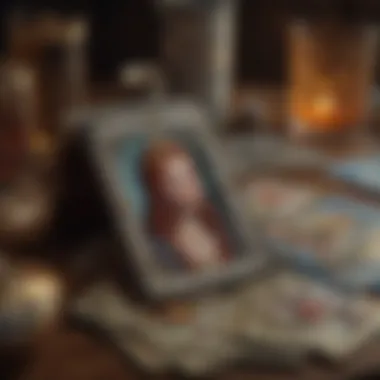

Integration of tarot within therapeutic counseling is becoming increasingly popular. This approach merges traditional psychological methodologies with intuitive practices, creating a holistic framework for healing. The key characteristic of this integration is its ability to open dialogues about emotions and experiences that might be difficult to articulate. This makes it a valuable resource for therapists seeking to explore deeper issues. A unique feature of using tarot in counseling is the non-threatening nature of the cards; clients may feel more comfortable discussing their feelings in relation to imagery than in direct conversations about emotions. However, some drawbacks include skepticism from clients who may perceive tarot as unscientific.
Coping Strategies
Coping strategies enhanced by tarot offer innovative ways to deal with stress and anxiety. Many find that drawing a card when feeling overwhelmed acts as a focal point for relaxation and reflection. The key characteristic of this method is its accessibility; anyone can incorporate a simple card draw into their daily routine. This is a beneficial option for people looking for quick yet meaningful ways to check in with themselves. A notable unique feature is the adaptability of tarot for various situations, from daily stressors to long-term psychological challenges. However, certain individuals may find that focusing on tarot could delay seeking other essential mental health support, leading to a potential disadvantage.
Community Support
Community support around tarot practices fosters connection among individuals with shared interests. Many find solace in discussing their readings and experiences with others in group settings, whether in-person or online. The key characteristic of community support is its inclusive environment, facilitating open conversations about spirituality and personal development. This makes it a constructive choice for those seeking to enhance their understanding of tarot. A unique feature of this support network is the diverse perspectives shared, offering a richer understanding of individual experiences. However, reliance on community insights can sometimes lead to confusion, especially if interpretations vary considerably.
"Tarot can illuminate paths to self-discovery and growth, inviting introspection and exploration of the self."
Through the lens of personal development, the role of tarot extends beyond mere fortune-telling. It presents itself as a tool for deeper connection with oneself, aids in emotional processing, and cultivates supportive communities. The insights gained from these practices tend to resonate and linger, inviting ongoing reflection and personal evolution.
Cultural Impact of Tarot Cards
The cultural impact of tarot cards extends far beyond their function as tools for divination. Tarot has woven itself into the cultural fabric of various societies around the world. Each interpretation brings a unique perspective, enriching not only spiritual practices but also art, literature, and community engagement. By examining the cultural dynamics surrounding tarot, we gain insight into how these cards resonate with collective beliefs and individual values. This exploration plays an essential role in comprehending the diverse ways tarot serves people today.
Global Interpretations
Tarot Across Cultures
Tarot across cultures reveals the adaptability of tarot as it travels through different societies. Originating in the 15th century, the tarot deck has been reinterpreted through various cultural lenses, enriching its symbolism. For example, the adaptation of tarot in African cultures includes elements from local spiritual practices, creating unique decks that reflect indigenous beliefs. This melding results in a rich diversity that enhances the understanding of tarot as a universal tool for exploration.
This global approach offers benefit in recognizing individual narratives within the tarot tradition. The key characteristic here is the incorporation of local symbols which makes these decks resonate more deeply with users. The idea of a culturally contextualized tarot deck can provide personal significance that draws users closer to their heritage. However, these interpretations can occasionally cause contention about authenticity and appropriation.
Regional Deck Variations
Regional deck variations showcase the localized adaptations of tarot cards. Each region often reflects its own customs, folklore, and aesthetics. Such variations provide a fertile ground for creativity and expression. For instance, the Marseille Tarot emphasizes clarity of imagery, which is distinctly different from the enchanting imagery found in regional decks from Asia.
This key characteristic of diversity offers tarot practitioners a broad spectrum of choices when selecting decks suited to their preference. More importantly, understanding these variations contributes to a broader appreciation of tarot’s role in many cultures. The unique features of regional decks often include local languages and stories, which may resonate well with users. On the other side, the disadvantage may include inconsistency in interpretations and meanings, which can confuse new practitioners.
Tarot in Literature and Film
The depiction of tarot in literature and film provides an interesting perspective on its cultural significance. Works such as “The Devil Tarot” explore themes of chance, fate, and the unknown, amplifying the mystique surrounding tarot in popular culture. Additionally, films, like "The Tarot Reader", offer narratives that enhance the public perception of tarot, blending entertainment with spiritual exploration.
This connection to arts reflects the universality of tarot lore and encourages a deeper engagement with the cards. The key characteristic here is the portrayal of tarot as a resource for reflection, which resonates with audiences seeking meaning in their own experiences. However, there may be a tendency to sensationalize tarot, leading to misconceptions that distort its genuine purpose.
The Future of Tarot Practices
Emerging Trends
Emerging trends in tarot suggest the discipline is growing beyond traditional boundaries. Enthusiasts are developing new methodologies, fresh interpretations, and innovative designs. The rise of online platforms encourages shared experiences, fostering a sense of global community among practitioners.
The key characteristic of these trends is their embrace of inclusivity. Tarot is evolving to reflect diverse identities and backgrounds, making it more accessible. This evolution can enrich collective understanding and encourage new voices within the tarot community. The unique feature of adapting tarot practices to contemporary lifestyles enhances relevance, although it might challenge conventional norms among traditionalists.
Digital Tarot Tools
Digital tarot tools have transformed how practitioners engage with tarot cards. From apps offering daily card pulls to online communities where users can share interpretations, technology enhances accessibility and learning. Tools such as Golden Thread Tarot provide guided readings and educational resources, making it easier for beginners.
This characteristic of digitization makes tarot more available for a broader audience. Digital tools often allow for recordings of session insights and progress tracking, enhancing a user’s journey. However, some criticism arises regarding the impersonal nature of digital interactions, which may detract from the intimate experience traditional readings may offer.
Community Engagement
Community engagement in the tarot realm emphasizes the importance of shared experiences and support networks among practitioners. Workshops, forums, and social media groups foster a vibrant community that encourages growth and learning. Platforms like reddit.com enable discussions about various tarot cards and methodologies, creating a space for collaborative exploration.
The key feature of community engagement is its focus on inclusivity and a shared journey. Such environments provide valuable spaces for both novice and experienced readers to connect. The unique aspect is that these communities often focus on sharing personal stories, which can deepen one’s connection to tarot. However, the challenge remains in ensuring that all voices in the community are heard and valued equally.




